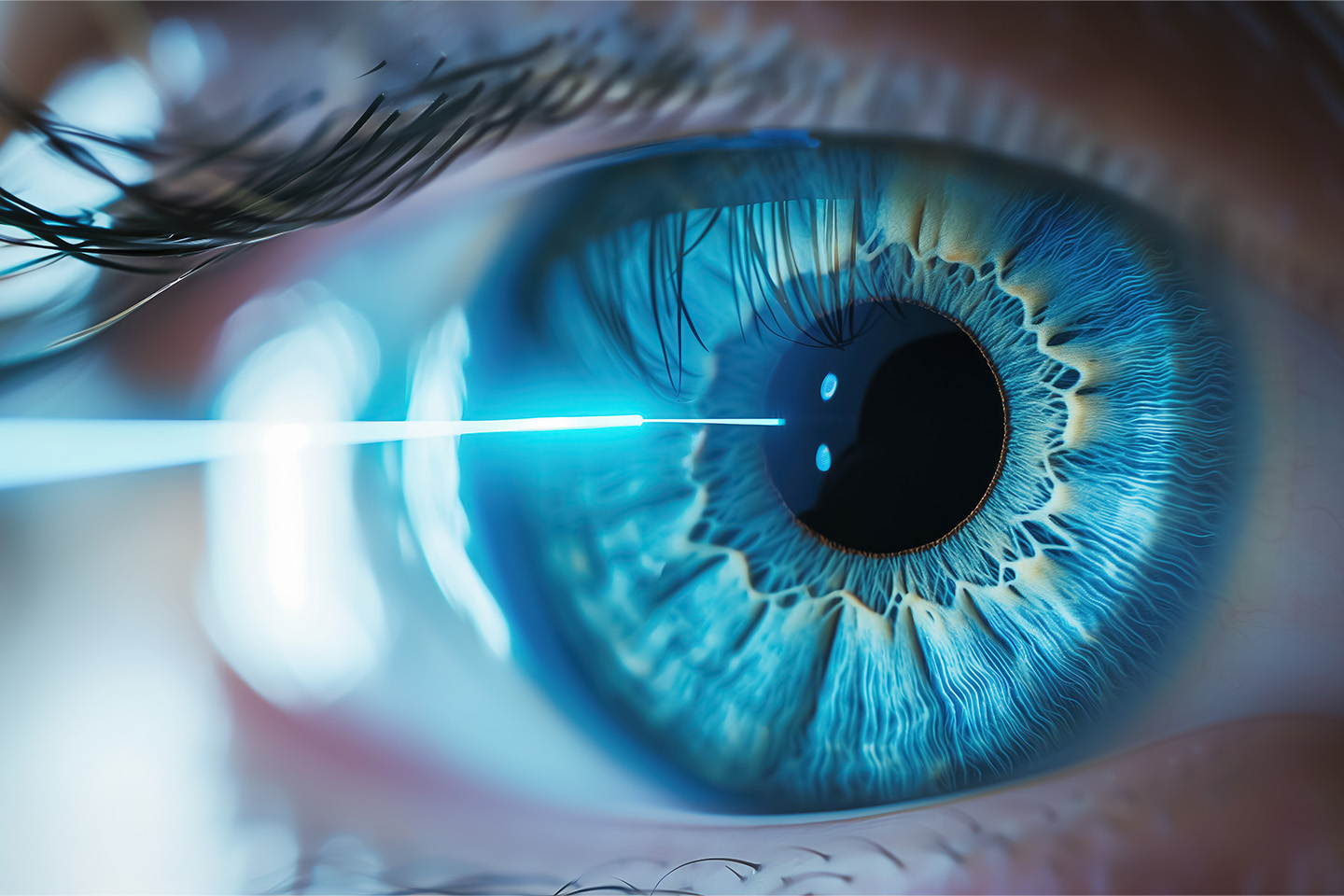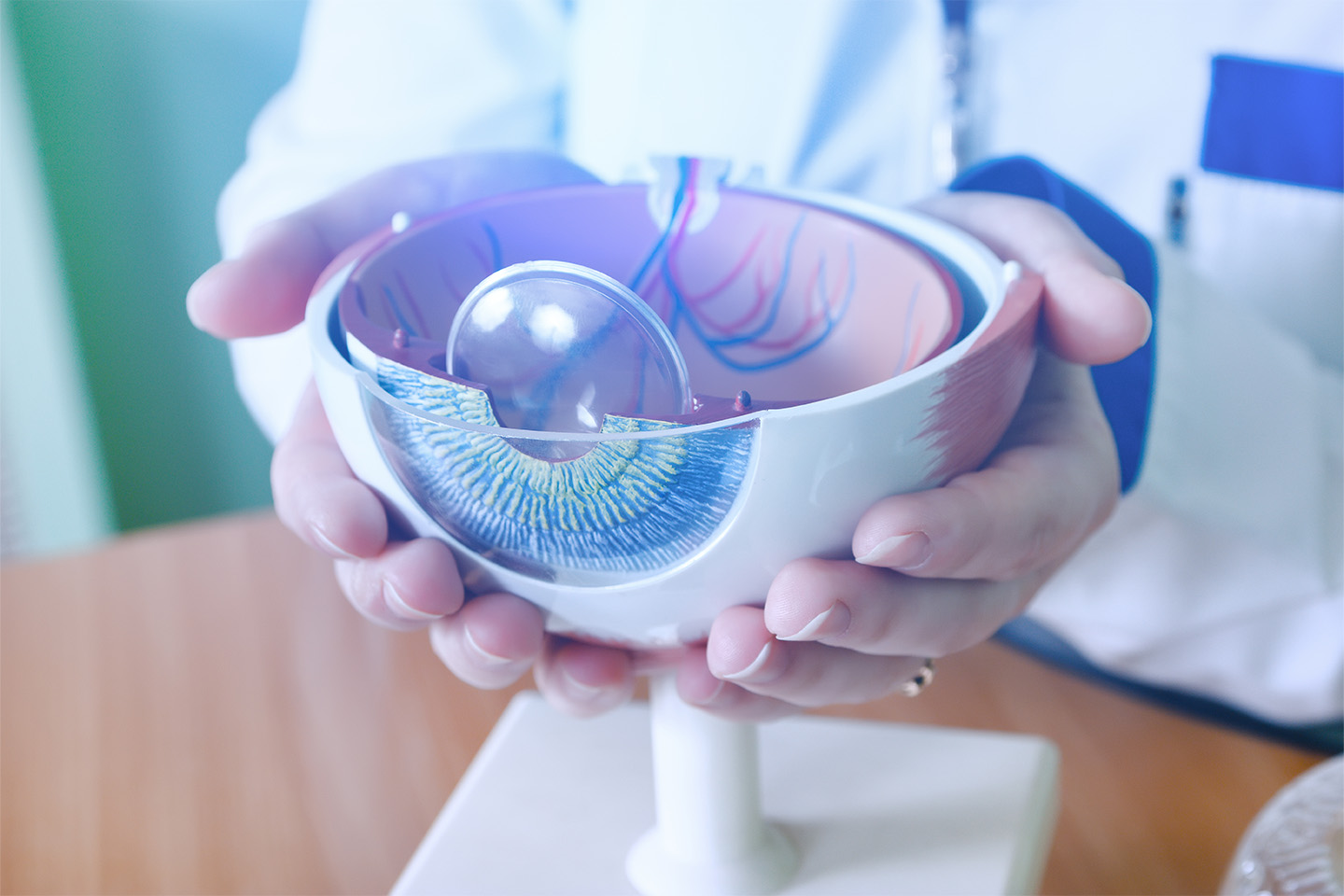What We Know about Cataract Prevention – and What You Can Do Now

Researchers suggest taking steps now to protect your vision in the future.
Cataracts are very common, affecting the vision of more than half of Americans over the age of 60. Over time, the proteins in the eye start to join together and cloud the lens. Frustrated patients often wonder if there’s anything they can do to prevent this condition from worsening, or from happening in the first place.
While there is no guaranteed way to prevent cataracts, researchers are discovering exciting possibilities for preventing cataracts. Studies are revealing the mechanisms behind cataract formation and providing further evidence for protective measures that patients can start today.
Take Your Vitamins
Healthy, balanced eating, with a range of fruits and vegetables, is always good advice. But now there may be another reason to eat your veggies. The results of some recent studies have suggested that vitamins C & E may be particularly important in preventing cataracts, especially when it is included in the diet, rather than as a supplement.
The Nutrition and Vision Project, a 10-year study, saw a decreased progression of both nuclear and cortical cataracts thanks to vitamin C in the diet. This antioxidant is thought to boost protection for the lens proteins as the eye is exposed to light and air over time. Typically eye fluid is high in vitamin C, and a dietary boost seems to help maintain those levels.
Other studies showed a weak but positive correlation between these vitamins and eye health. The Beaver Dam Study showed promising news for those who are at risk for cataracts, as vitamins C and E seemed to have some protective influence. For the overall group, however, there didn’t seem to be a difference. In the Longitudinal Study of Cataract, results showed that vitamin E users halved their risk of nuclear cataracts. Because this was an observational study, further research is needed.
Avoid Smoking
Smoking is known to be an unhealthy habit — it can lead to heart disease and cancer. But it can also contribute to the development of age-related cataracts. Some studies suggest that heavy smokers have three times the risk as nonsmokers. The exact mechanism of this is not known, but it may be related to the toxicity of tobacco smoke, as the free radicals and carbon monoxide may increase the oxidative stress in the eyes. Current smokers are at higher risk than those who used to smoke, and it doesn’t seem that there is a relationship between smoking and cortical cataracts specifically.
Wear Sunglasses
Consistently wearing sunglasses, and even a wide-brimmed hat, is key to protecting your eyes. You should especially use eye protection during the summer and at high altitudes, when UV light levels are higher. The best option is wraparound sunglasses that block light below 400 nm, particularly for those over 40 or 50. UV-protective contacts are also an option, but they don’t protect the area that isn’t covered by the contact.
Spending time in the sun without eye protection damages your eyes through oxidative stress. Although the eye itself doesn’t get much oxygen from the body, a study by the National Eye Institute suggests that UV light causes the oxidative reaction that damages the lens protein.
Make an Eye Appointment
One of the best ways to protect your eye health is scheduling regular checkups with your eye doctor. Patients over 40 are at greater risk, and should be vigilant with their eye care. The symptoms may be subtle at first, including cloudy vision and the appearance of halos and glare. If you are one of the millions of Americans at risk, schedule an appointment with the professionals at ICON Eyecare to better learn how you can protect your vision.
[DISPLAY_ULTIMATE_SOCIAL_ICONS]








